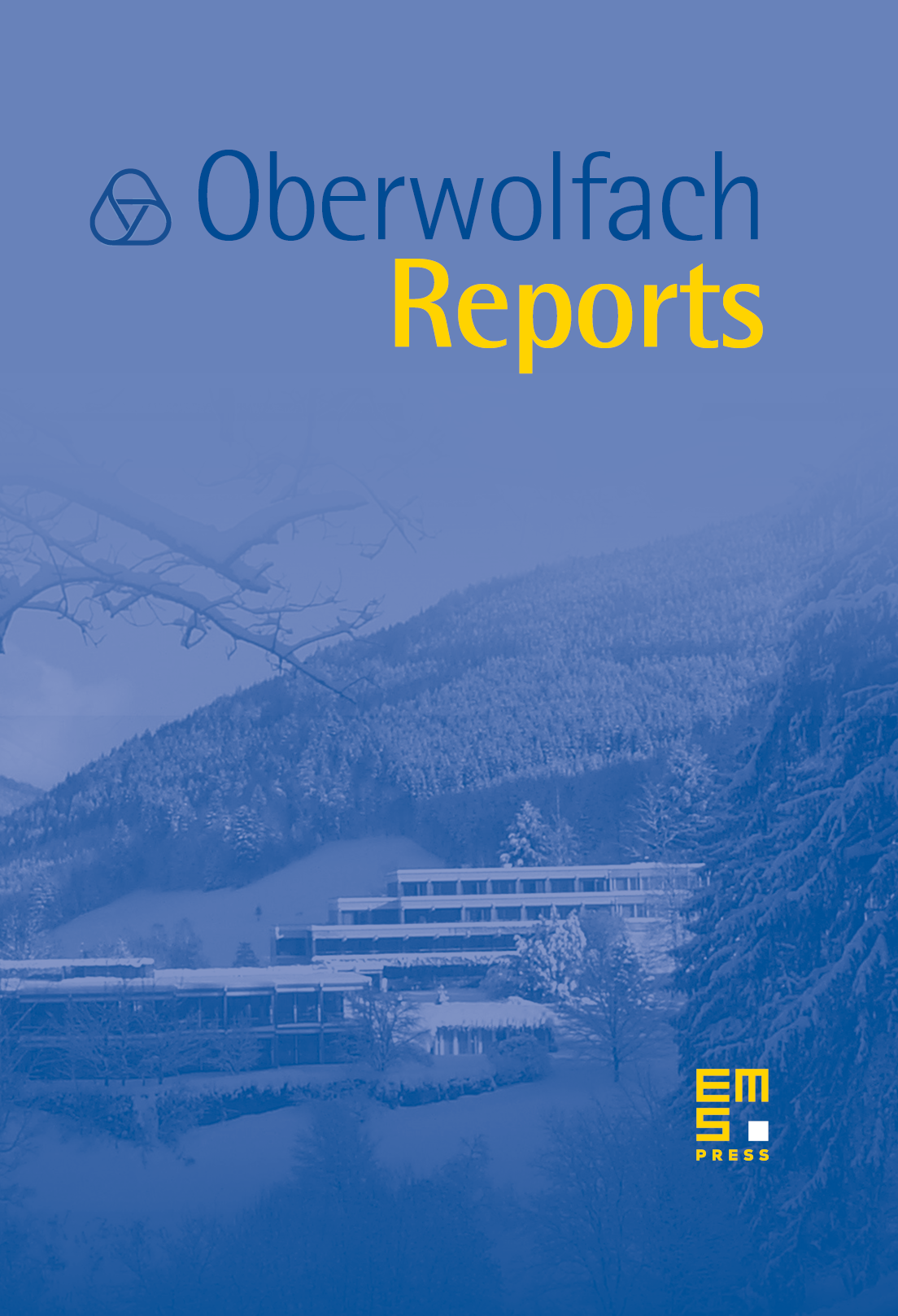Homotopy Theory
Paul G. Goerss
Northwestern University, Evanston, United StatesJohn P. C. Greenlees
University of Sheffield, United KingdomStefan Schwede
Universität Bonn, Germany

Abstract
Algebraic topology in general and homotopy theory in particular is in an exciting period of growth and transformation, driven in part by strong interactions with algebraic geometry, mathematical physics, and representation theory, but also driven by new approaches to our classical problems. There is also a human element to this change: there is a very strong group of relatively young researchers in the field. The purpose of the workshop was to present and discuss the latest result and ideas in homotopy theory and related fields. We made a special point to invite and feature some of the new voices.
One of the startling developments of the last few years has been the emergence of derived algebraic geometry, which may be defined as algebraic geometry with commutative rings replaced by some homotopy invariant analog, such as differential graded algebras, simplicial commutative rings, or -ring spectra. While quite historical, with origins in Serre's work on intersection theory, it is only since the work of Mike Hopkins and others that we've realized that some of the fundamental objects in algebraic geometry, such as the moduli stack of elliptic curves, are inherently derived in nature. In Tyler Lawson's talk, we heard the latest installment of this story. He reported on his work with Mark Behrens on derived Shimura varieties. Shimura varieties are a fundamental tool in number theory, central to the Harris–Taylor proof of the local Langlands conjecture, and the Behrens-Lawson work has the potential to make concrete a long-guessed-at connection between number theory and stable homotopy theory. The talks by Henn, Hill, and Naumann also worked out some of the interplay between number theory and homotopy theory.
In another link between homotopy theory and algebraic geometry, we have lately seen that classical invariants for rings can be generalized to great effect to ring spectra, an important example being (topological) Hochschild homology . In the talk by Vigleik Angeltveit, we heard about a computation of this invariant for the ring spectra associated to real- and complex--theory. Angeltveit and his coauthors have discovered new and very different-looking periodic phenomena. Gunnar Carlsson, motivated partly by questions from -theory, discussed the iterations of and related constructions. There is a conjecture, due to John Rognes, that such iterations increase complexity in a very specific way.
The moduli spaces of surfaces, now for higher genus, also arise in other areas of homotopy theory as well. A few years ago, Madsen and Weiss gave a proof of the Mumford conjecture cohomology of the stable moduli space of Riemann surfaces; indeed, they did far more, as they calculated the homotopy type of this moduli space. The interest in these space has diverse origins, but currently they are central to our new understanding of various models for string theory and mirror symmetry in mathematical physics. This has created a great deal of interest in homotopy theoretic aspects of these moduli spaces. The talk by Elizabeth Hanbury explored some of these connections. These spaces are also part of current research on Gromov–Witten invariants; the talk by Stefan Bauer gave us a homotopy theoretic approach to dissecting the related Seiberg–Witten invariants.
The interactions between homotopy theory and modular representation theory are now well established: the tools of stable homotopy theory are fundamental to representation theory, and results from representation theory feed back into our understanding of stable homotopy theory. We heard two talks in this areas, one from Henning Krause on the structure of sub-categories in the stable module category and another from Martin Langer on a subtle invariant of that same category inspired by a similar invariant from stable homotopy theory. Another important point of contact between homotopy theory and algebra is in the theory of group actions on spaces and the closely-related study of the classifying spaces of groups. These ideas threaded their way through the talks by Adem, Grodal, Levi and Lück. The talk by Levi, for example, gave an overview of a long story about how one can recover the -completion of a classifying space from simpler, homotopy theoretic data, and that of Grodal used related machinery to give a sophisticated representation theoretic extension of Smith theory.
A few talks told us something new about classical topics. For example, Jim McClure's talk applied rational homotopy theory in a novel way to the homotopy theory of the intersection pairing on a manifold – which normally relies on some differential or PL structure to get transversality. And the talk by Rekha Santhanam on units in ring spectra revisited a topic central to producing “twisted” versions of homology theories; twisted versions of -theory have also played a role in the algebraic topology of mathematical physics, using the work of Freed–Hopkins–Teleman. The participant list also reflected the changing nature of the field. Of the 52 registered participants, 17 (or about 30 young – that is, graduate students or in a post-doctoral position – and 9 (17) younger participants. This emphasis was not completely accidental, but we had more proposed talks than slots and we emphasized quality of subject matter above other considerations when selecting speakers.
Cite this article
Paul G. Goerss, John P. C. Greenlees, Stefan Schwede, Homotopy Theory. Oberwolfach Rep. 4 (2007), no. 4, pp. 2671–2726
DOI 10.4171/OWR/2007/45